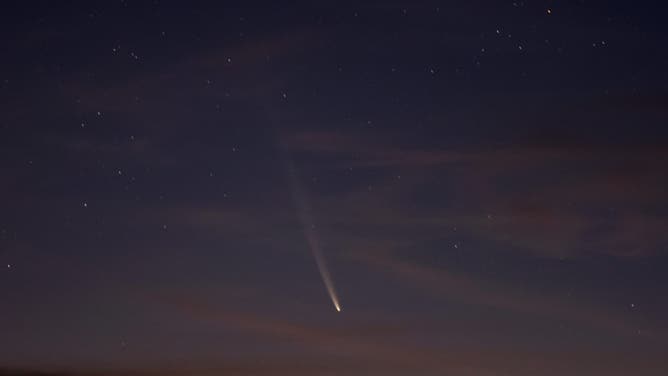Time is running out to see Comet Tsuchinshan-ATLAS before it disappears for possibly forever
The comet made its first documented pass by Earth this month and is likely to disappear from our night sky for 80,000 years -- that is, if it survives its voyage around the solar system.
Watch: Comet C/2023 A3 Tsuchinshan-ATLAS streaks across California sky
A once-in-80,000-year sight made its closest approach to Earth this weekend, and a stunning video recorded in California shows Comet C/2023 A3 streaking across the night sky.
The countdown begins for skygazers, as the much anticipated Comet Tsuchinshan-Atlas will disappear from our night sky by early November, according to NASA.
Discovered only in 2023, the comet originated from beyond the Solar System and Kuiper Belt, and has never reached our inner Solar System in human history before now, the agency said.
The comet flew closest to Earth around Oct. 12, putting on spectacular displays around the globe. It is now starting to move away from earthling eyes for the last time in our lifetimes, and possibly for good.
Based on orbital calculations, astronomers believe it could be another 80,000 years before the comet is visible again, and that's only if it survives its voyage around the solar system.
Skygazers in the Northern Hemisphere can still catch a fading glimpse of this exit for the next several days just after sunset.
NASA’s Gary Johnston said the comet will be about 30 degrees above the western horizon on Oct. 23, going an additional two degrees higher per day until the comet disappears from sight.
He noted that the brightness of Comet Tsuchinshan-Atlas will wane by about a magnitude of 6 by the end of October, making it barely visible to the naked eye in the best viewing conditions. Using binoculars may help.

View of comet C/2023 A3 Tsuchinshan-ATLAS from the International Space Station.
(NASA / NASA)
Officially named C/2023 A3 Tsuchinshan-ATLAS, the comet was identified by observers at the Tsuchinshan Observatory in China and an ATLAS, or Asteroid Terrestrial-impact Last Alert System, telescope in South Africa.
The comet was named after both observatories, according to NASA.







